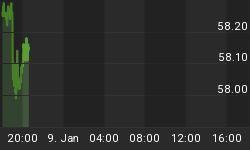Uber wants to become part of the ‘net-zero’ emissions alliance by switching over its fleet to electric vehicles. All of its rides could take place in EVs by 2030 in the US, Canada, and Europe; and the rest of the world by 2040. That will mean quite a lot is being asked of its driver network, who own these vehicles.
Uber's new pledge is to put $800 million initially into its plan to offer rides exclusively in electric vehicles by 2030 in US, Canadian and European cities, and to be entirely free of emissions by 2040. Drivers will be getting $1.50 more per ride for going electric, and fares will go up for riders choosing an EV.
Uber wants to catch up with its top competitor, Lyft, on bringing EVs to ride-hailing, ride-sharing customers. They’re hoping it will be as big a move as 2011 when Uber first rolled out the concept of skipping a taxi ride and getting a good, cheap ride in someone else’s car.
Their customers — mostly in the younger Millennial and Generation Z age groups — embraced the Uber concept from the very beginning. It’s made Uber and Lyft rides even more common for many customers than owning their first car. Millennials and Gen Zers tend to be concerned about climate change and air quality, which could be a strong marketing hook for Uber and Lyft.
Uber and Lyft drivers are usually not the most informed about the latest offerings in electric cars from Tesla, Chevrolet, BMW, Nissan, and their startup competitors.
For those of who've taken several Uber and Lyft rides, they may be riding in a popular hybrid like the entry-level Toyota Prius. Uber and Lyft customers will probably be getting a ride from the airport, or to the nightclub, in a five-year-old, fuel efficient small car or crossover, which are more common than hybrids. That could be vehicle models such as a Honda Accord, Honda Civic, Toyota Corolla, Toyota Yaris, Kia Sportage, or a Hyundai Sonata.
What many of these drivers don’t know is that few of them can really compare the total cost of ownership of their small gasoline-powered car to a Chevrolet Bolt or a Tesla Model 3. Even with federal and state incentives, EVs are still at a higher starting price than buying a used, fuel-efficient vehicle. Low gasoline prices make the differential even more pronounced.
Uber and Lyft have always tapped into their drivers not having clear understanding of the business sense of putting in lots of hours and massive amounts of miles on their odometers. Their vehicles will be hit with depreciation loss, and many of them will have to spend more on vehicle maintenance and repair. They also pay their own income tax and receive no benefits from being part of the Uber and Lyft networks beyond a few discounts on popular consumer products that these companies pull together for their drivers.
Drivers who rent or lease a car to see how much side income they can make with Uber or Lyft are usually hit with frustration after a month or so of trying it out. Uber and Lyft — along with other popular brands in the mobility market like Postmates, DoorDash, and Instacart — are well known for seeing high levels of turnover among their independent contractor drivers. While the state of California has attempted to reverse this business model to turn drivers into employees with its AB5 law enacted last year, the mobility companies have amassed a huge budget to promote a November state ballot initiative that could reverse AB5.
For now, Uber is rolling out its “Uber Green” surcharge in 15 cities in the US and Canada. Riders are charged an extra dollar for their ride to be picked up in a hybrid or EV, and they’ll get an extra 50 cents per ride from Uber — meaning drivers will get an extra $1.50 per ride for supplying these Uber Green vehicles.
Lyft started this EV move in June 2020 by committing to make 100 percent of its fleet zero emission by 2030. The initiative was launched in collaboration with Environmental Defense Fund. The ambitious plan also included its Express Drive rental car partner program for ride-share drivers, Lyft’s campaign to bring in autonomous vehicles, and rental cars for riders.
Tesla CEO Elon Musk has been promising to bring out a similar service for several years — which he’s called the “Tesla Network.” Musk has tied it into the company’s autonomous vehicle plans, but during last year’s 4th quarter earnings call, he said it will have to be done at first by human drivers instead of Tesla’s full self-driving system.
“I think it will probably make sense to enable car sharing in advance of the kind of robotaxi fleet because the car sharing can be done before full self-driving is approved by regulators. So it’s probably something that we would enable before a sort of robotaxi fleet is enabled,” Musk told shareholders.
Shareholders and other analysts will be watching to see if Uber and Lyft can keep their promises to hit their net-zero targets over the next decade. They have had a previous promise fall apart — that of shared rides removing enough polluting vehicles from the roads to clean up air quality and fight climate change.
That was illustrated by a Union of Concerned Scientists study released in February. Ride-hailing trips typically displace low-carbon trips, such as public transportation, biking, or walking. The study found that Uber and Lyft trips result in an estimated 69 percent more air pollution than the trips they displace.
Switching over their fleets to EVs would reverse it. But convincing all of their independent contractor drivers to only bring in EVs will be a very tough sell for Uber and Lyft.
By Jon LeSage for Oilprice.com
More Top Reads From Safehaven.com
















